So, you finally brought home that adorable bundle of fur you’ve been dreaming about – your new puppy! Congratulations on adding an exciting addition to your family! However, now that the initial excitement has settled, you might find yourself wondering… “What do I do next?” Don’t worry… I’ve got you covered. In this guide, I’ll walk you through some essential steps to ensure a smooth transition for both you and your new puppy.
1. Establish a Routine
By establishing a consistent routine for meal times, potty breaks, playtime, bedtime, and training, you’ll provide structure and stability for your puppy as they adjust to their new environment. In the end… trust me… a well-established routine will make life easier for both you and your puppy.
Feeding Schedule:
It’s important to determine an appropriate feeding schedule for your puppy based on their age, size, and breed. Puppies typically need to eat more frequently than adult dogs, so it may help to plan for several small meals throughout the day. Keeping their mealtimes consistent will help to regulate your puppy’s digestion and prevent accidents indoors… therefore making life a lot easier for you in the long run.
Potty Breaks:
Puppies have small bladders and need frequent bathroom breaks, especially after eating, drinking, playing, or napping. Yup, I know, that sounds like everything they do… and it is! Take your puppy outside to their designated potty spot every 1 to 2 hours during the day, as well as first thing in the morning, last thing at night, and after any prolonged period of confinement. Consistency is key to housebreaking success, so be patient and praise your puppy lavishly when they go potty outside.
Playtime:
Puppies have tonnes of energy and, in turn, need plenty of opportunities for play and exercise. Incorporating structured play sessions into your daily routine will help burn off energy and keep your puppy mentally stimulated. Things like interactive toys, playing a gentle game of fetch, and short walks around the block are all great ways to help promote physical activity.
Bedtime:
Establish a bedtime routine to help your puppy wind down and prepare for sleep. Create a cozy sleeping area for your puppy, such as a crate or bed in a quiet area of your home. You can encourage relaxation with calming activities such as gently petting them… or if you are so inclined… read them a story! Consistency and comfort are key to helping your puppy settle into a peaceful nighttime routine.
Training Sessions:
Incorporate short training sessions (5 to 10 mins MAX) into your daily routine to teach your puppy basic training skills. Keep these sessions fun, positive, and engaging while using rewards like treats, praise, and playtime to reinforce good behavior. As mentioned previously, consistency and repetition are essential for effective training, so practice regularly and be patient as your puppy learns and grows.
2. Puppy-Proof Your Home
By puppy-proofing your home, you’ll create a safe and secure environment where your new puppy can explore and play without the risk of harm. Taking these precautions will give you peace of mind and help your new puppy adjust to their new surroundings with confidence.

RECOMMENDED ARTICLE: NEW PUPPY? TIPS FOR PUPPY PROOFING YOUR HOME
Identify Potential Hazards:
Walk through your home and identify any potential hazards that could pose a danger to your puppy. Common hazards include things like electrical cords, toxic plants, household chemicals, small objects that could be swallowed, and sharp items that could cause injury. Make a checklist of these hazards to ensure you don’t overlook anything.
Secure Hazardous Areas:
Take steps to secure hazardous areas of your home and block off access to rooms or areas where your puppy could get into trouble. Use baby gates to restrict access to stairs, balconies, or areas with items that are things you don’t want your puppy having access to. Consider using childproof locks on cabinets containing cleaning supplies or other hazardous substances… you may not think a puppy can open a cupboard… but they can!
Store Household Items Safely:
Store household items, such as medications, cleaning products, and small objects, out of your puppy’s reach. Place these items in high cabinets or locked containers to prevent accidental ingestion or choking hazards. Keep trash cans securely closed to prevent your puppy from rummaging through them and potentially eating something that can be harmful to them.
Remove Toxic Plants:
Many common household plants are toxic to dogs if ingested. Identify any toxic plants in your home and either remove them or place them in areas that are inaccessible to your puppy. Be aware that outdoor plants accessible to your puppy could also pose a risk, so take precautions to prevent access to them as well. The ASPCA has created an in-depth list of toxic and non-toxic plants which can be used to check if your plants are a potential danger for your puppy… rule of thumb is better safe than sorry!
Supervise, supervise, supervise:
Even with careful puppy-proofing, it’s essential to supervise your puppy whenever they’re out and about in your home. If you are unable to keep a close eye on them they should be confined to a safe area such as an exercise pen. This point is so important so I am going to repeat it… always supervise and keep a close eye on them to ensure they’re not getting into anything they shouldn’t and intervene quickly if they show any interest in potentially hazardous items.
3. Vet Visit
Regular veterinary care is essential for monitoring your puppy’s growth and development and addressing any health issues that may arise. You should schedule a visit to the vet shortly after bringing your new puppy home. Being proactive in your puppy’s care will help ensure their well-being and happiness.
Comprehensive Physical Examination:
During the initial vet visit, your puppy will undergo a thorough physical examination. The vet will assess your puppy’s overall health, including their weight, body condition, coat, eyes, ears, teeth, and overall demeanor. This exam will help to identify any underlying health issues or concerns that may need attention. If you have any questions or concerns this is the best time to bring those up with your vet.
Vaccinations:
The vet will discuss and administer any necessary vaccinations to protect your puppy against common infectious diseases. Vaccines typically recommended for puppies include those for distemper, parvovirus, adenovirus, and rabies and timing can vary depending on where you are located as some countries may have different requirements.
Deworming and Parasite Prevention:
Puppies are susceptible to internal and external parasites such as roundworms, hookworms, fleas, and ticks. Your vet may recommend deworming medications to eliminate any existing parasites and prescribe preventive treatments to protect your puppy from future infestations which can cause problems for both you and your puppy.
Microchipping:
Microchipping is a simple procedure which implants a tiny identification chip under your puppy’s skin, typically between the shoulder blades. This chip contains a unique identification number that can be scanned by a microchip reader and helps to ensure your puppy can be quickly identified and reunited with you if they ever become lost.
4. Introduce Basic Training
Introduce basic training to your new puppy right from the start. This ensures that you’re laying the foundation for a well-behaved and well-adjusted adult companion. With the use of positive reinforcement, practicing consistency and patience, you’ll help your puppy develop the essential skills and behaviors that will benefit them throughout their life.
Establishes Communication:
Basic training provides an opportunity to establish clear communication between you and your new puppy. Teaching them simple behaviors helps them to understand what you expect from them and creates a sense of trust and cooperation.
Positive Reinforcement:
As discussed frequently throughout this site, I recommend the use positive reinforcement techniques such as treats, praise, and toys, to motivate and reward your puppy for desired behaviors. Positive reinforcement not only encourages your puppy to repeat good behaviors but, again, it also strengthens the bond between you both and creates a positive association with training.
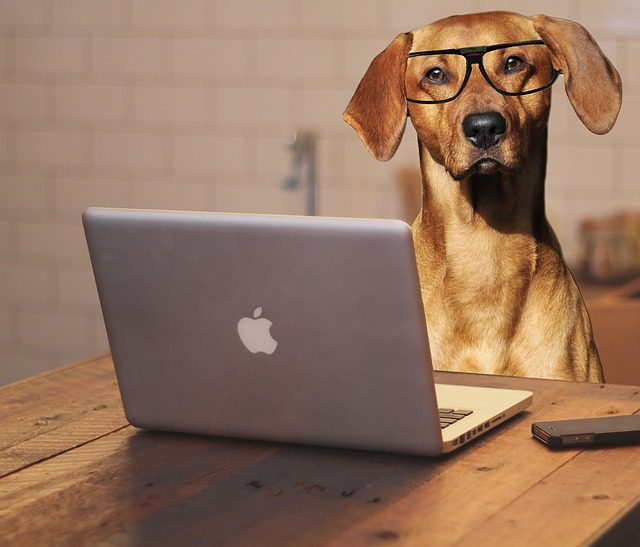
RECOMMENDED ARTICLE: HOW DOGS LEARN: THE BASICS OF LEARNING THEORY
Consistency and Patience:
Consistency is key when training your puppy. Use the same cues to avoid confusion and as mentioned earlier, keep training sessions short (5 to 10 minutes) to prevent your puppy from becoming overwhelmed or losing interest. Be patient… learning takes time, especially for young puppies.
Enroll in Puppy Classes:
Consider enrolling your puppy in a group training class or working with a professional dog trainer to enhance their training experience. Puppy classes provide structured guidance, socialization opportunities, and expert advice on training techniques and problem-solving. The work you put in at this stage will pay off in the end.
5. Socialization
Socialization helps your puppy develop essential social skills, confidence, and resilience that will benefit them throughout their life. Through positive exposure to different people, animals, and environments, you’re laying the foundation for a well-adjusted and social companion who can successfully and confidently navigate the world around them.

RECOMMENDED DOWNLOAD: GET OUR PUPPY SOCIALIZATION CHECKLIST
Exposure to Different People:
Introduce your new puppy to a variety of people of different ages, genders, ethnicities, and appearances. Encourage positive interactions by allowing friendly people to offer treats and gentle greetings. Expose your puppy to individuals wearing hats, sunglasses, uniforms, or using mobility aids to help them become comfortable with diverse appearances and behaviors.
Interaction with Other Animals:
Facilitate positive interactions between your puppy and other dogs, cats, and household pets. Arrange playdates with friendly, vaccinated animals to allow your puppy to practice social skills such as communication, sharing, and appropriate play behavior. Supervise interactions closely to ensure safety for all involved.
Exposure to Different Environments:
Gradually introduce your puppy to various environments and stimuli, such as parks, beaches, sidewalks, busy streets, car rides, elevators, and public transportation. Expose them to different surfaces, textures, sounds, and smells to desensitize them and build confidence in unfamiliar settings.
Gradual Exposure:
Introduce new stimuli (people, animals, and environments) gradually and at your puppy’s pace. Start with easy, low-stress situations and gradually increase the level of exposure as your puppy becomes more comfortable and confident. Avoid overwhelming your puppy with too many new experiences all at once, as this can lead to fear or anxiety.
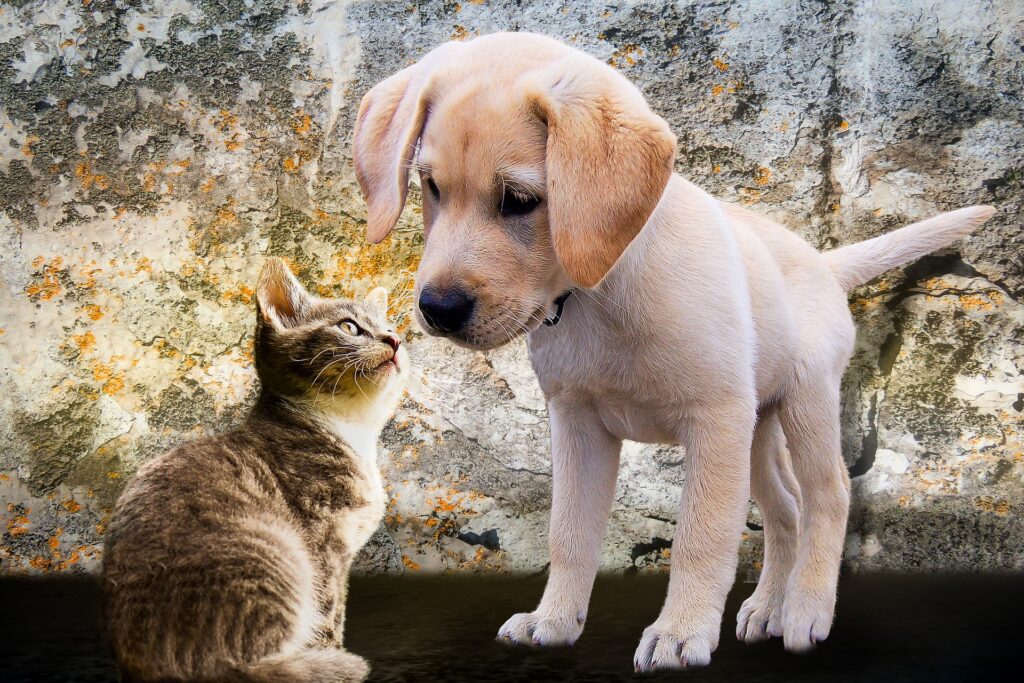
RECOMMENDED ARTICLE: TIPS ON HOW TO SOCIALIZE YOUR PUPPY
Ongoing Socialization:
Socialization is an ongoing process that continues throughout your puppy’s life. Make socialization a regular part of your puppy’s routine by exposing them to new experiences on a consistent basis. Encourage positive interactions and monitor your puppy’s behavior to address any signs of fear, anxiety, or discomfort promptly. There are formal classes, run by professional dog trainers, that focus primarily on puppy socialization… perhaps there is one in your area.
If you’re interested you can check out our Puppy Socialization Checklist. It will guide you to work with your puppy to help them feel comfortable and confident with new experiences, while focusing on positive training techniques. The checklist is broken down into easy-to-follow sections that cover areas such as people, environments, sounds, objects, other animals and more. It also includes guidance on safe and positive exposure techniques on how to create positive associations for your puppy and tips for gradually introducing your dog to new experiences in a way that builds their confidence.
6. Crate Training
By implementing crate training, you’re providing your puppy with a safe and secure space of their own while also helping them learn valuable skills such as self-control and independence. With patience, consistency, and the use of positive reinforcement methods, crate training can be a positive experience for both you and your puppy.
IntroducING the Crate:
Start by introducing your puppy to the crate gradually and positively. Place the crate in a location where your puppy can still feel like part of the family. Make sure it has bedding and toys inside to make the crate a cozy and inviting space. Leave the crate door open and encourage your puppy to explore it on their own terms.
Positive Associations:
Create a positive association with the crate by feeding your puppy their meals near or inside the crate. Gradually move the food dish farther inside the crate over time. Offer treats, toys, and praise whenever your puppy willingly enters the crate. NEVER use the crate as a form of punishment as this creates a negative association which will mean your puppy will not see the crate as a safe place… and having them use the crate will likely become a battle rather than a positive experience.
Gradual Enclosure:
Once your puppy is comfortable entering and exiting the crate willingly, you can gradually close the door for short periods while they are inside. Start with just a few seconds and gradually increase the duration as your puppy becomes more accustomed to being confined. Stay nearby to reassure your puppy and offer praise and treats for this behavior. To help extend the time in the crate, and ensure it is a positive experience, you can give them a chew toy, a puzzle feeder, or a Kong toy filled with the long list of yummy foods that one can use as a filler!
As your puppy becomes more comfortable and reliable in their crate, gradually increase their independence by leaving them alone for short periods while you’re at home. Start with brief absences and gradually work up to longer durations to prevent separation anxiety and build confidence.
Nighttime Routine:
Use the crate as part of your puppy’s nighttime routine to promote restful sleep and prevent nighttime accidents. Place the crate next to your bed or in your bedroom so your puppy feels secure and can sense your presence. Remember to take your puppy outside for a final potty break before bedtime, and provide them with a comfort item such as a blanket or stuffed toy for bedtime.
7. Housebreaking
Housebreaking, also known as potty training, is a critical aspect of new puppy care which involves teaching them where and when it’s appropriate to eliminate. Potty training takes a great deal of patience and consistency – much like other aspects of training a puppy – but the hard work will pay off!
Establish a Routine:
Set a consistent schedule for taking your puppy outside to eliminate. As listed above, puppies typically need to go potty:
- First thing in the morning
- After meals
- After naps
- After playtime
- Before bedtime
Stick to the routine as closely as possible to prevent accidents indoors and reinforce good potty habits.
Supervised Outdoor Time:
Supervise your puppy closely when they’re outside to ensure they’re focused on eliminating rather than getting distracted by play or exploration. During the training process, even if you have a fenced yard, use a leash to take them outside. This allows you to monitor whether or not they actually eliminate or not. When taking them out use a cue word or phrase, such as “go potty” or “do your business” – and keep that cue consistent each time – but it’s best not to talk to them while they are actually trying to eliminate as they need to focus and puppies are very easily distracted.
Positive Reinforcement:
After your puppy eliminates outdoors successfully be sure to provide lots of praise and rewards. Using treats, praise, and affection to reinforce the behavior creates a positive association with going potty outdoors. Timing is crucial, so be sure to praise your puppy as soon as they finish eliminating. I will give you an additional tip here… once they have gone potty, and you have ‘rewarded’ them… let them off their leash (if you have a safe, enclosed area) or take them for a short walk. This teaches them that going potty doesn’t necessarily mean that they have to go inside immediately… and this will help your puppy not develop such habits as holding their urine when they go outside to ensure that they can stay outdoors for a little while.
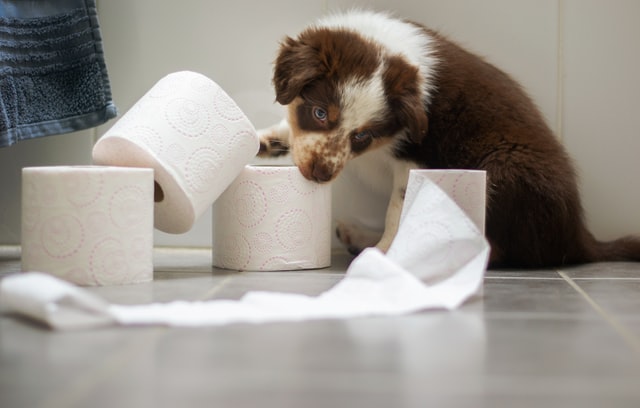
RECOMMENDED ARTICLE: FIVE TIPS FOR HOUSE TRAINING YOUR NEW PUPPY
Consistency:
Consistency, much like all aspects of training, is key to successful housebreaking. Take your puppy outside to the same spot (and the same cue) each time so they associate that area with potty time. Stick to the same schedule every day, even on weekends or during inclement weather, to reinforce the routine and prevent confusion.
Supervised Indoor Time:
When indoors, keep a close eye on your puppy and watch for signs that they need to go potty, such as sniffing, circling, or squatting. Each accident that your puppy has in the house will make training more difficult as this is a self reinforcing behavior. If you catch your puppy in the middle of an accident you can interrupt them. I suggest using the cue that you use when taking your puppy out to eliminate, relatively loudly (without shouting) with the intent that this may stop them from eliminating. Now you have the opportunity to take them outside and then give them lots of praise and treats for going outside! DO NOT punish them for having an accident as this can lead to behavioral issues around toileting… and I am pretty sure that you don’t want that to happen!
Crate Training:
Crate training can be a valuable aid in housebreaking your puppy. Dogs naturally avoid soiling their sleeping area, so the crate can help teach your puppy to hold their bladder and bowels until they are taken outside. Take your puppy outside immediately after they are released from the crate to reinforce good potty habits.
8. Nutrition
Proper nutrition is essential for your puppy’s growth, development, and overall health. Feed your puppy a high-quality diet suitable for their age, size, and breed. You can consult with your vet for recommendations on feeding schedules and portion sizes… but here are a few basics to consider with feeding a puppy.
Regular Feeding Schedule:
Establish a regular feeding schedule for your puppy and stick to it as closely as possible… even on the weekends.
Age-Appropriate Feeding:
Choose a high-quality puppy food that is specifically formulated to meet the nutritional needs of your growing puppy. Puppies have different nutritional requirements than adult dogs, so it’s essential to feed them a diet specifically designed for puppies. Follow the feeding guidelines provided on the food packaging or recommended by your vet based on your puppy’s age and weight. Puppies typically require more frequent feedings than adult dogs, with meals divided into several smaller portions throughout the day.
Avoid Table Scraps:
Avoid feeding your puppy table scraps, as these can be high in calories, fat, and sodium and may lack essential nutrients. Additionally, feeding table scraps can encourage begging behavior.
Fresh Water:
Provide your puppy with access to fresh, clean water at all times. Proper hydration is essential for digestion, nutrient absorption, temperature regulation, and overall well-being.
Monitor Growth and Body Condition:
Monitor your puppy’s growth and body condition regularly to ensure they are growing at a healthy rate and maintaining an ideal body condition. Consult with your vet if you have concerns about your puppy’s growth, appetite, or weight gain.
9. Exercise
Prioritizing regular exercise and including a variety of stimulating activities helps your puppy stay physically and mentally healthy.
Age-Appropriate Activities:
Provide age-appropriate activities and exercises that suit your puppy’s size, breed, and energy level. Young puppies have limited stamina and should engage in short bursts of play and activity mixed with plenty of opportunities to rest. As your puppy grows, you can gradually increase the duration and intensity of their exercise to match their developing physical capabilities.
Playtime:
Incorporate plenty of interactive playtime into your puppy’s daily routine based on their size, age and breed. Engage in games of fetch, tug-of-war, or hide-and-seek to keep your puppy active and stimulated. Rotate toys regularly to prevent boredom and encourage exploration and engagement.
Outdoor Adventures:
Take your puppy on regular outdoor adventures to explore new environments. Arrange supervised playdates with other puppies or friendly, vaccinated dogs to provide socialization opportunities and promote healthy play behavior. Monitor interactions closely to ensure they remain safe and positive for all involved. Another fun option is visiting safe, dog-friendly locations such as parks, beaches, or hiking trails where your puppy can safely run, sniff, and explore to their heart’s content.
Mental Stimulation:
Incorporate mental stimulation into your puppy’s daily routine by using training sessions, puzzle toys, and interactive games. Teach your puppy new tricks, practice training cues, or try scent games to challenge their mind. This can often be as tiring, or more, for a dog (in a good way) as physical exercise itself.

RECOMMENDED ARTICLE: ENRICHMENT IDEAS FOR DOGS: TOYS, GAMES AND DIY
Avoid Overexertion:
Be mindful not to overexert your puppy, especially during the growth stages. Puppies have developing bones and joints that are susceptible to injury from excessive exercise or high-impact activities. Allow your puppy to set the pace and provide ample opportunities for rest and recovery between play sessions. If you are unsure, check with your vet for guidelines with respect to what is safe.
10. Lots of Love and Patience
This one should be easy! With love, patience, and the use of positive reinforcement, you’re laying the foundation for a deep and meaningful bond with your puppy that will endure for years to come. Embrace the joy of companionship, treasure the moments you share, and nurture the unique connection that makes your relationship with your puppy truly special.
Bringing home a new puppy is a big responsibility, but it’s also incredibly rewarding. Enjoy every moment of watching your puppy grow and learn, and cherish all the memories you’ll create together.


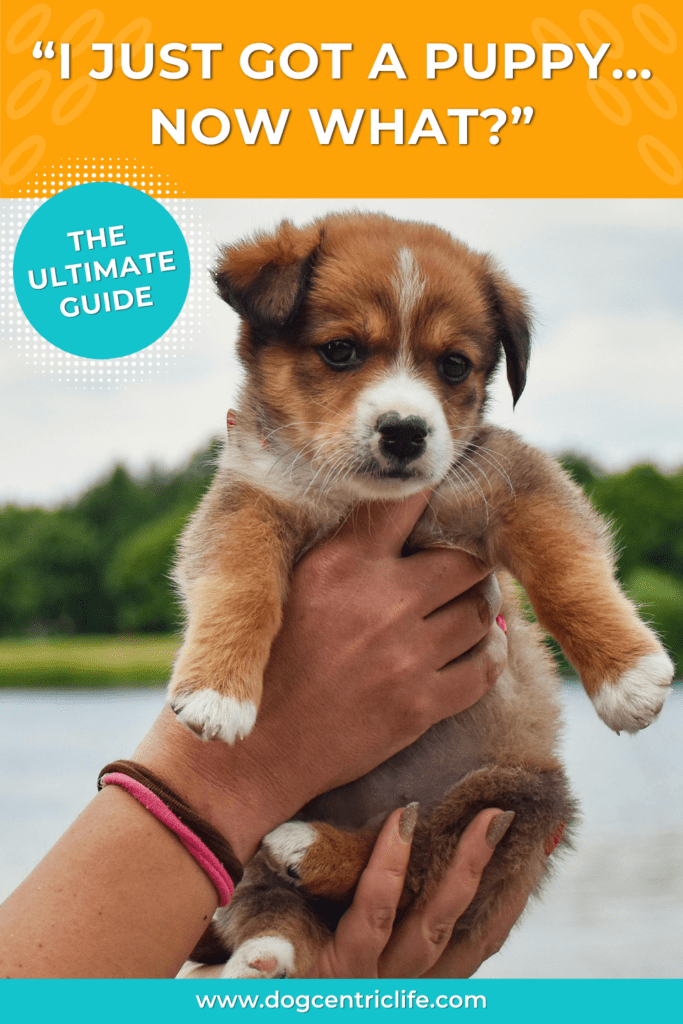




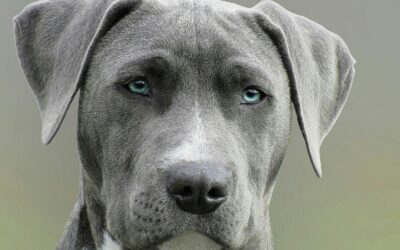
0 Comments